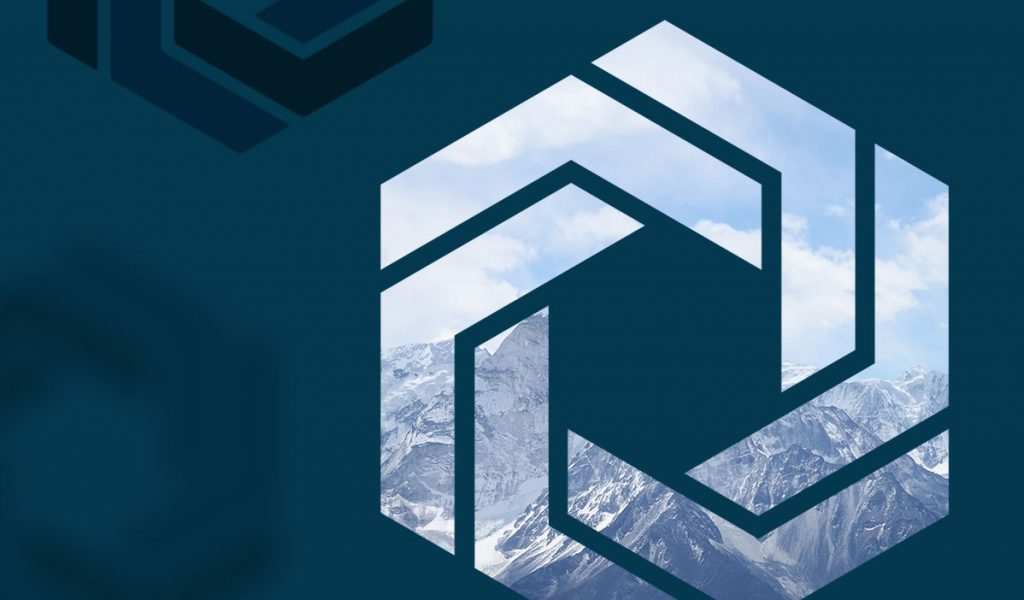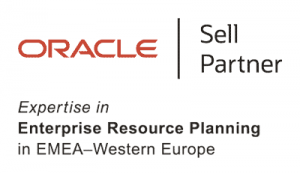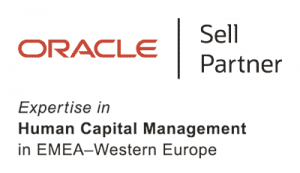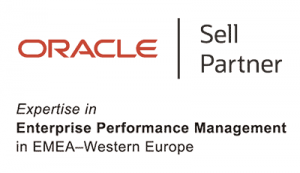Published on December 19, 2019
Fool’s Gold – “Best of Breed” – Part II
In Part I, I raised the spectre of the return of a “Best of Breed” strategy for slicing and dicing up the Back Office corporate Finance and HR systems and outlined the drivers for this behaviour.
The questions I pose too anyone thinking of doing this are: Knowing the benefits of Finance and HR working together why would you separate them? What are you really achieving by having multiple Cloud platforms for the Back Office? Why go to the expense of doing this? Are you really better and have deeper pockets than that of the Silicon Valley fuelled Research & Development (R&D) investment that has taken place over the past 15 years?
Powerhouse of R&D Investment
Oracle, SAP, Workday, Unit 4, Infor, FinancialForce et al collectively invest billions of dollars a year in R&D. Oracle’s R&D budget in SaaS applications is quoted to be around $6 Billion a year! Where does it all go?
Engineering world class software is a capital expensive business and it is fuelled by R&D. It starts off with an abundance of initiatives that over time are whittled down into the final product. Constant iteration against a moving marketplace can easily mean investments can become sunk costs and write-offs as the sands move under you. Software engineering is a high-risk poker game. The rewards can be massive, but the risks required to be undertaken are equally substantial. It all requires money and lots of it and that’s why Venture Capitalists and Private Equity exist in the first place. It is also a game played by experts with a lifetime of experience.
So why do Organisations and the Users of these systems now consider that their new world Enterprise Structure should consist of multiple Back Office platforms? In effect re-engineering and undoing all the benefits and learnings that has been derived from the billions of R&D investments undertaken. If you pursue a strategy of breaking up the Back Office across multiple platforms hosting multiple SaaS applications just why do you think you can do it better? and what business benefit are you really delivering?
The power of SaaS Cloud applications is in the intrinsic value that is created in terms of operational insight of bringing Finance and HR together in a single fully integrated instance. One data model providing the foundation for technologies like adaptive intelligence and machine learning for many years to come. The R&D at great investment has already been undertaken bringing together the very best talent across the world including, but not limited to: the most current thinking of subject matter intellectuals and thought leaders; behavioural scientists; data scientists; creatives; and the very best software designers.
No organisation, private or public sector has the money, time or experience to pull together what the major software vendors have achieved in regard to Back Office SaaS applications, let alone keep pace with the underlying forward investment required to continuously drive innovation. Their sole focus should be on front of house and their business.
Fool’s Gold – Challenges of a Best of Breed Cloud Strategy for the Back Office
Not one of the Tier 1 Software Vendor powerhouses I know would openly endorse multi-platforms for the core enterprise applications (HR & Finance). The challenges you open yourself up to include, but not limited to:
· Barrier to Entry for Technology Innovation – Technologies like AI and Machine Learning are embedded in the applications and work off a single aggregated data model as they are data driven not process driven. Split the data model up and potentially you can’t necessarily make full use of this type of innovation that comes with the platform. The Software Vendors are always building for tomorrow and not for today so you won’t be able to keep up
· Continued Investment to Stay Current – One of the biggest benefits of SaaS is the ability to constantly stay current on the latest release of software. To replace Back Office functionality with microservices means you are going to have to replicate similar types of on-going investment. Do you really have the finances and the investment capability to continually do this?
· Reduced Negotiating Power – SaaS vendors love to do commercial deals on bulk of modules and volume. By not selecting one Vendor for the core product suite, you are at risk of losing significant commercial discounts and your negotiating position becomes weaker
· Higher Implementation Costs – Now you have multiple Cloud platforms to implement and then integrate. The costs include but not limited to are significant everything from contracting, commissioning, mobilising Consultants with different skill sets to implement, and then on-going support. You lose economies of scale in terms of cost
· Multiple Patching Cadences – Multiple SaaS packages from different vendors will be on different patching schedules; trying to get these to align throughout the year is not realistically possible. The risk is constant that one side of the two systems (possibly more) is going to change and something is going to break. You are going to be in constant state of regression testing
· Consistency of UX is lost / Accessibility Impacted – Multiple SaaS packages from multiple vendors means by default multiple UX. Accessibility is also significantly impacted which will result in compromises through off system work-arounds. Consequently, to regain consistency another layer of the enterprise potentially, though not required, would need to be added
· Integration or Interfaces or both – Open systems aside. Are you integrating the data, or just building point-to-point or a middleware enterprise service bus? Regardless, data models and interface technology changes; these all require ongoing support. It doesn’t take much for either to stop working
· Disaggregated Data Model – Instead of a single data model, we have data replicated all over the enterprise. This naturally needs to be constantly synchronised and in all probability in real time
· Increased Security Risk Profile – Integration and Interfaces require security. Transferring data between platforms naturally introduces greater risk of data loss. Neither SaaS vendor is going to take responsibility for the data while it is being transferred; that’s for you to take responsibility for
· Increased Support Costs – More products, more integrations, more knowledge, different skills required both inside and outside the tent and also the cost of managing multiple vendors and contracts
The bottom line is your total cost of ownership is going to be significantly higher over the long run. Welcome to the 90’s!
Where does Best of Breed Make Sense?
Now there is a place for integration of SaaS application platforms that can leverage huge benefits and that area is in Organisations connecting their Front Office to the Back Office. This is where integration and use of open systems architecture comes into play – at the macro level, not at the functional module micro level in the Back Office.
There are Software Vendors that have laser like focus and have transformed software development for the Front Office from a customer experience perspective. One stands head and shoulders above the rest and that is Salesforce – the blueprint for Cloud in terms of product but also as a service organisation. Being a platform itself it has enabled a myriad of specialist SME’s to bring highly innovative products to the market that should not be ignored! SME’s are the powerhouse of innovation, especially in the United Kingdom. (Definitely a blog for another day)
Personally, I think Oracle still have much to do in the CX area and this is becoming an area of greater focus for them. CX encompasses a whole host of different products usually acquired through acquisition. It is only matter with time with Oracle before they get this right.
However, one to look out for is the company “Service Now”. Once merely the domain of the IT Helpdesk, it already is and looking further to extend a suite of “vertical experiences” over the top of other platforms. Personally, I have high expectations for Service Now.
Finally, the “Qualtrics” acquisition by SAP could be their saving grace and a potential game changer here as this is key to their future strategy of delivering “experiences”. However initial reaction to their “X” (eXperience) and “O” (Operational) data strategy has not been overly positive.
What Should You do?
(1) Decide upon a single core platform for all the core back office business functionality and stick with that platform vendor for better or for worse
(2) Use your single core platform Open Systems Architecture that is rich in API’s to extend the functionality by creating bespoke microservices that provide services that are specific to the Organisation but are not delivered by the core platforms functional modules. (Look to host these as a Platform as a Service, preferably on the same infrastructure supporting SaaS)
(3) Collaborate with your chosen platform Software Vendor to continually raise the bar and help them become an even better delivery partner than they are today. Cloud isn’t just about product its about customer service. You will ultimately benefit from this
(4) Leverage new core SaaS innovation as and when it arrives looking as to how this can positively impact on your business operation and then make sure you implement it and use it (so many don’t and this becomes missed opportunity)
(5) Consider a Best of Breed strategy for the Front Office; looking to take advantage of those Software Vendors that have innovated in this area (especially SME’s) or the further build of local specific microservices that reflect your offerings with a view if connecting to the Back Office and driving value end-to-end across the enterprise delivering superior customer and employee experiences
Fool’s Gold
Regardless of platform preference for those that proceed with the approach of splitting up an already fully integrated back office suite of HR & Finance SaaS applications on a single platform need to be challenged.
It doesn’t take much to look into the crystal ball, roll forward the clock five years and listen to the noise around “total cost of ownership”; the unreliability of the integrations; the cost of managing all the integrations; the size of the internal Information Technology department; and then for the penny to drop and those Organisations starting to strategically retire such applications and finally move to a single core platform. For me this is and always will be simply “Fool’s Gold”.
So, if you have made it through to the end of these two blogs – thank you and congratulations as I have probably just saved you somewhere between £250-500K and 3-6 months in expensive Consultancy fees to point out the same findings. (Nice work if you can get it though). Cheques in the post are still always kindly accepted.
I very much look forward to people’s opinions and the ongoing discussion, but as I stated in Part I, the answers to many of today’s problems can usually be found in the past.
Disclaimer: This is a personal blog. The opinions expressed here represent my own and not those of my employer. In addition, my thoughts and opinions change from time to time and I consider this a necessary consequence of having an open mind. This blog is intended to provide a semi-permanent point in time and as such any thoughts or opinions expressed within out of date posts may not be the same or similar to those that I hold today.














